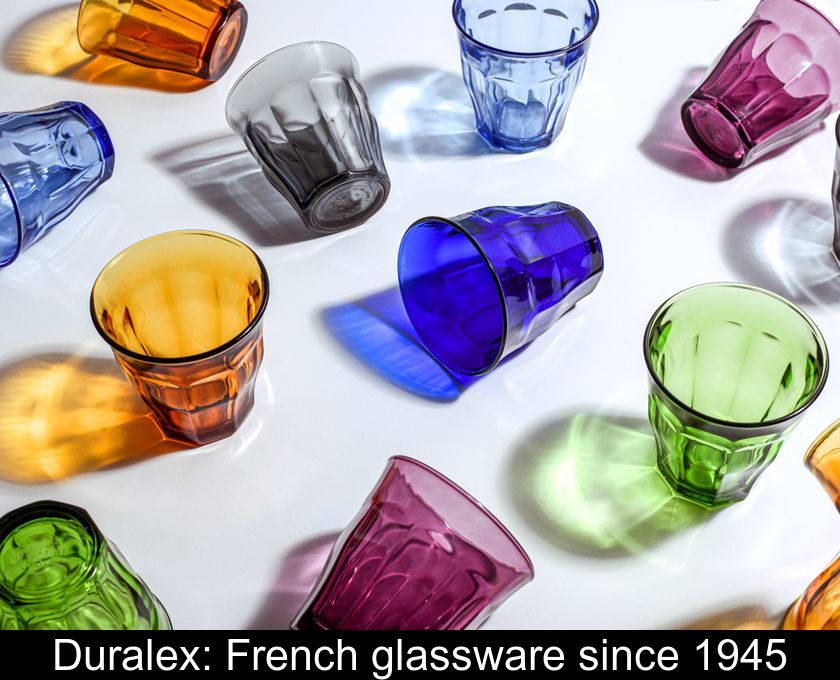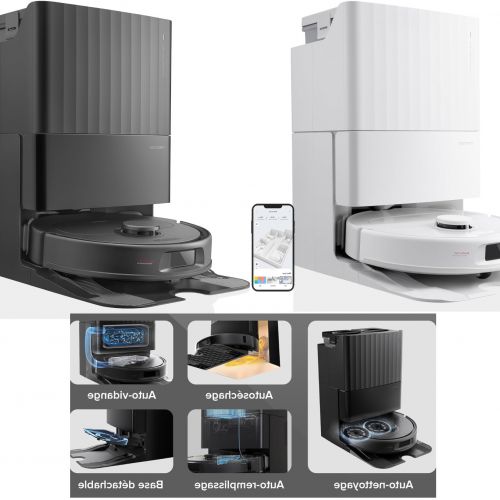Duralex: French Glassware Since 1945
Since its creation in 1945, the Duralex brand has had a tumultuous history. This French glassware company, which almost closed down over the past twenty years, became a SCOP in 2024. We invite you to trace the epic journey of this iconic tricolor brand in 5 questions.
1- When was the Duralex brand created?
If the brand Duralex is dear to the hearts of many French people, it is undoubtedly due to childhood memories. Schoolchildren who ate in the cafeteria remember the game of looking for the number inscribed at the bottom of their glass, supposedly corresponding to their actual age...
We have all used these reputedly unbreakable glasses at some point, chosen for this reason by school cafeterias. But few of us know the origin of this famous French company.
Its story began in 1927, in La Chapelle-Saint-Mesmin, a suburb of Orléans. It was there that vinegar maker Dessaux created a glassworks in 1927, before selling it to perfumer François Coty in 1930 for the production of his perfume bottles.
Acquired by Saint-Gobain in 1934, the glassworks invented tempered glass at the end of the 1930s and manufactured, over the following decades, items as diverse as light signals, car windows, and washing machine portholes!
The company envisioned another use for tempered glass: tableware. It registered a trademark for its glass objects for culinary use: Duralex was officially born on June 6, 1945.
2- Why the name Duralex?
The brand name comes from the Latin phrase Dura lex sed lex, which literally means: "The law is harsh, but it is the law."
This Latin-inspired name was of course chosen by the company to emphasize the durability of its products. Despite being roughly handled in French canteens, Duralex glassware does not break!
Tempered glass, which is the brand's specialty, is heated to 700°C and then immediately cooled, making it up to 6 times more resistant than regular glass.
3- What is the name of the iconic Duralex glass?
It is thanks to the technical innovation of tempered glass that the French glassware brand created its cult product: the Gigogne glass.
This highly durable glass tumbler was the first tableware item marketed by the brand in 1946. It is also the canteen glass that all schoolchildren remember…
Today, the Duralex brand offers more than 350 tableware references, but this simple glass has remained its most iconic product.
4- Why did Duralex almost disappear?
The French glassware brand experienced its golden age during the Thirty Glorious Years between 1945 and 1975. Even then, its most iconic creations, the Gigogne glass and the Picardie glass, were exported worldwide.
After experiencing rapid growth, the Duralex brand faced its first setback in 1997, when Saint-Gobain decided to sell it to the Italian glassmaker Bormioli Rocco. This began a series of ownership changes that put the company in significant financial difficulty between 2004 and 2008. In 2019, it received the Living Heritage Company (EPV) label, but this was not enough to revive its activity.
In September 2020, the company, which has nearly 250 employees, was placed under judicial reorganization. A few months later, it was acquired by the French group International Cookware, which also sells Pyrex products… In 2022, this group changed its name to become La Maison française du verre and rebranded the company as New Duralex International.
In November 2022, due to rising energy prices, the company was forced to shut down its furnaces and place its 250 employees on partial unemployment. In April 2024, La Maison française du verre initiated a judicial reorganization process, and several takeover offers were reviewed by the Orléans commercial court.
5- Who took over Duralex?
Even though it has experienced dark years and a turbulent history, the Duralex brand still exists in 2024.
Since July 26, 2024, it has become a SCOP, that is, a cooperative and participatory company. This solution allowed some of the employees, along with site director Antoine Marciano, to take over the company.
This glassware manufacturer, which is part of French heritage, is thus opening a new chapter in its history. To revive its significantly declining revenue in recent years, it aims to win back the hearts of the French and to put its Gigogne glasses back in all the canteens of France. A new generation of schoolchildren will be scrutinizing the bottom of their glass and asking: "And you, how old are you?"







